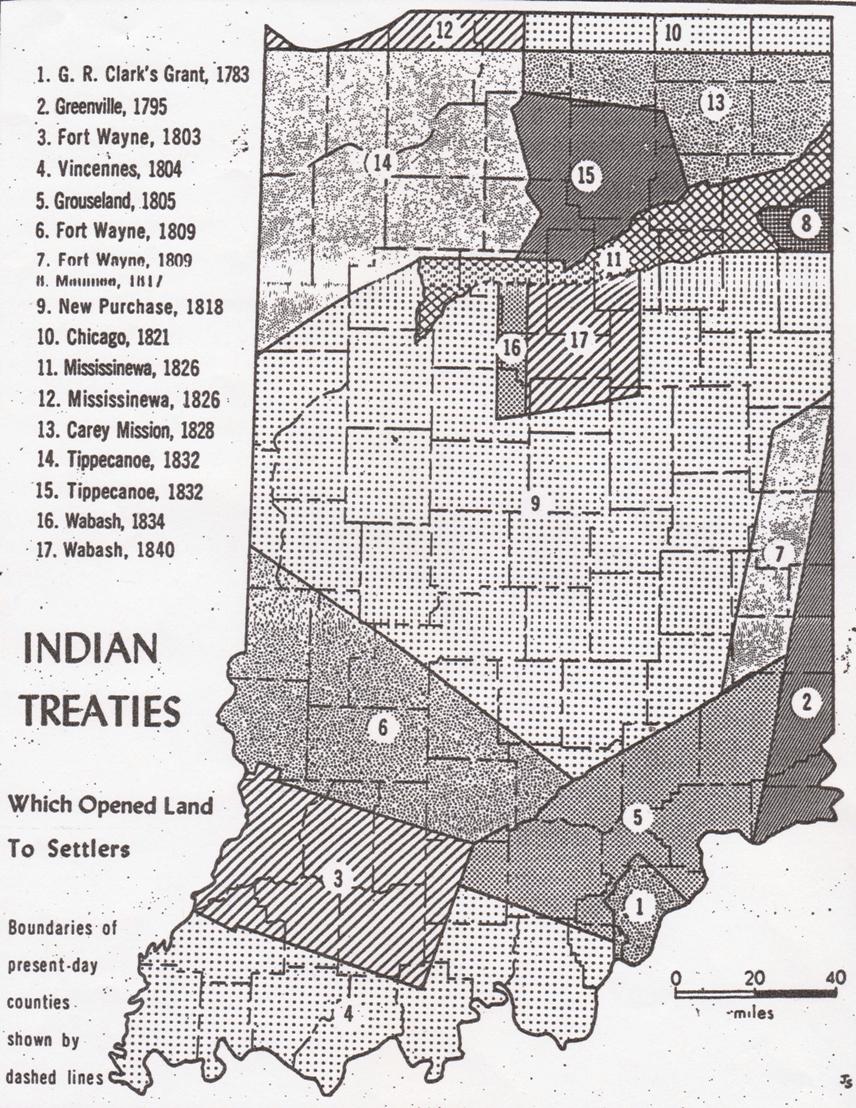TOWN OF VERNON
1815 - 2015
Contributed by Rev. Steven Malone
Steve in one of those working on Vernons' early religious history.
Our town of Vernon, IN will observe its Bi-Centenial next year. Two centuries is a long time to recall and set down the account of events. It will thus be necessary to depend upon the work of previous historians.
Vernon is an unusual town in several ways. First Vernon's founder John Vawter had been working the area as Territorial Marshall before the town, county and state were founded. The only transportation was creeks, rivers and old paths. John worked as a Surveyor, he helped establish churches in the area and helped with establishment of the Silver Creek Baptist Association in 1812. He was elected Colonel of the militia that went to the Battle of Tippecanoe in 1810and subsequently retained the title of head of the Jennings County militia after the County was formed. His layout of Vernon included lots for churches and schools. The first school was a log building near the Commons (Vernon city park) which also served the town as a playground.
A regular Baptist Church was founded in 1816 followed by the Methodist Church in 1817, the Presbyterian in 1825 and the Christian in 1831. All these met in homes or other places until their buildings were built. The Baptist and Presbyterian still meet for worship on the spot where they began. The Christian and Methodist merged into North Vernon churches and are part of the early work of their Denominations. The Christian Church claims to be the oldest of its persuasion in Indiana. The latter two church buildings still stand, hopeful for further use someday.
If you have information on your ancestors who were involved in the Vernon churches you may contact Steve through me at Kfurballkell@aol.com
There is a list of names of founding members of the Vernon Baptist Church here
There is a list of names of founding members of the Vernon Baptist Church here
Another installment from Rev. Steve Malone on Early Baptist History
John Vawter, a member of an old Virginia Virginia family, came to Indiana with his father Jesse Vawter and his uncles Philemon
and Achilles. They settled in the area that became Madison and John went to work as a surveyor and Federal Marshal. He also served as a magistrate in
Madison during the early years. He was a man of many talents which must be further discussed in another article.Jesse Vawter was a church planter and devoted much time to promoting this in the area of the Grouseland Treaty (after 1805, see map below). His first church was called Crooked Creek Baptist Church founded in 1807 at Madison. Nearly all of the beginning churches met in settler's homes. Jesse was fifty years old when coming to Indiana Territory. Shortly before his death in 1839, he said he had been involved in the organization of twelve churches and three Baptist Associations. He served as Association moderator for the Silver Creek Baptist Association 1812-1827 when this reorganized into the Coffee Creek Association. Coffee Creek later divided intothe Madison and White River Associations in 1833. Jesse was moderator of the Coffee Creek and Madison Associations until he died. His son, John Vawter, was the clerk of the three Association of which Jesse was moderator.
It is impossible to measure the value of John Vawter's keeping of records. His brother William would develop a perchant for this later. Grace Bicknell Vawter's family history and William Taylor Stott III's Baptist history no doubt relied upon information they kept.
John and Jesse were but two of the church planters to step onto this stage. Thomas Hill Sr., Rev. Jesse Holman at Aurora, Rev. J.J. Pavy in Switzerland and Decatur Counties, Rev. Wm. Taylor Stott Sr. and his descendants, Rev. Daniel Stogsdill, and many others promoted church planting and growth in Southeastern Indiana.
The credit for this sweeping of revival over the entire Northwest Territory goes to the many person affected by the great Can Run Camp Meetings of 1800-1803. These Ministers were accompanied with a body of enthused converts and were all interested in making the church the center of their lives at their new homes. The ministers did the evangelizing and the lay people built the church buildins that dotted the Southern Indiana landscape. There were many persons interested in education and community building. They also cherished the freedom the older of them had won with their blood. They stood for the Constitutioona nd Flag of the United States in a way many have lost today.
Vernon very soon left being a pioneer settlement to becoming a agrarian society with developing transportation and educational opportunities. We at Vernon took strong stands agains slavery and we survivied being of double-mind on the issue. We also could not agree at church. Three other denominations were founding churches at the same time as the Baptists. The Baptists also could not agree with each other. In Southern Indiana we had Free-Will, Separate, Primitive, Two-seed-in-the Spirit Primitive groups. If you were not one of those, you were a Regular Baptist. No wonder Barton Stone and Alexander Campbell began a "Restoration" movement, also know as the Christian Church.
While the Prodestant churches were multiplying the Catholic church was spreading so fast that soon they outnumbered them all.

You may use this material for your own personal research, however it may not be used for commercial publications without express written consent of the contributor, INGenWeb, and